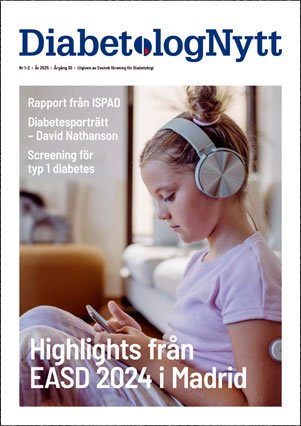Two large studies show a marked difference in cardiovascular outcomes
- Action Points
- Note that this study was published as an abstract and presented at a conference. These data and conclusions should be considered to be preliminary until published in a peer-reviewed journal.
- Women with diabetes have significantly greater risk of cardiovascular events than do men with diabetes.
- The gender-driven "risk window" opens in the perimenopausal age for acute myocardial infarction, and in the postmenopausal age for ischemic stroke and heart failure.
STOCKHOLM EASD — Two separate studies presented here found that compared with men women with diabetes face far higher risks of cardiovascular events beginning in middle age.
The first study — presented during a poster session at this year's annual meeting of the European Association for the Study of Diabetes by Giuseppe Seghieri, MD, of Agenzia Regionale Sanità, in Italy — included an analysis of more than three million Tuscany residents over the age of 16 (47% males).
Researchers found that overall, diabetic women had a higher diabetes-related excess risk of hospitalization for acute myocardial infarction (MI) than did men (hazard ratio 2.629, 95% CI 2.484-2.781 versus HR 1.963, 95% CI 1.877-2.053; P<0.05), but not for ischemic stroke (IS) or congestive heart failure (CHF).
The other study — also presented during a poster session here — was led by Xue Dong, at the Affiliated Zhongda Hospital of Southeast University, in Nanjing, China. He and his colleagues examined the relative risk of acute coronary syndrome in men and women with diabetes by analyzing data from nine case-control and 10 cohort studies comprising data for nearly 11 million people.
Dong and colleagues found that the pooled risk ratio of acute coronary syndrome associated with diabetes was 2.46 (95% CI 1.92-3.17) in women and 1.68 (95% CI 1.39-2.04) in men. And among patients with diabetes, women had a significantly greater risk of acute coronary syndrome than did men (pooled ratio of RR 1.38, 95% CI 1.25-1.52; P<0.001).
In Seghieri's study the risk for women compared with men varied by age groups, but the greatest disparity between women and men hospitalized for MI occurred from ages 45-54 (HR 5.827, 95% CI 4.299-7.720 versus HR 2.879, 95% CI 2.493-3.304; P<0.05). And from ages 55-64, women had an excess risk higher than did men for hospitalization for ischemic stroke (HR 4.139, 95% CI 3.594-4.745 versus HR 3.044, 95% CI 2.769-3.339; P<0.05) and for congestive heart failure (HR 6.828, 95% CI 5.683-8.156 versus HR 4.109, 95% CI 3.611-4.663; P<0.05).
"With respect to MI, diabetic women are more disadvantaged, compared to diabetic men, with a gender driven 'risk window' which mostly opens in the perimenopausal age," wrote the authors. "All this prompts attention to a timely, gender oriented, prevention of cardiovascular events in people with diabetes."
The retrospective study used data from 2005 to 2012, according to the authors, who mined and linked three datasets in Italy to form their cohort. Diabetes was determined based on ICD-9 codes or by presence in a regional diabetes registry. Previous research has documented the higher risk that diabetic women face, but the authors noted that little research has been done on if and how that risk changes with age.
In an interview with MedPage Today, Seghieri said that the next step is to examine why this sex-specific risk remains and to look for other factors responsible that weren't included in the study. He added that there are several theories as to why women would have a higher risk than men.
"It's possible that they are undertreated," he said. And it may be that women come to treatment later in life, he said, or that healthcare professionals may have focused on men with diabetes first. "But there is no clear reason yet," he said.
Acute Coronary Syndrome
In the second analysis by Dong, there were nearly 107,000 fatal and nonfatal acute coronary syndrome events. Five of the studies were conducted in North America, seven in Europe, and six in Asia. Authors searched databases for relevant studies from 1966 to 2014, and to be included, studies had to report sex-specific estimates of the relative risk, hazard ratio, or odds ratio associated with diabetes and acute coronary syndrome.
In a press release, the authors said that there should be a focus on treating diabetes in female patients. "We should avoid sexual prejudice in cardiovascular disease, take all necessary steps to diagnose it early, and control risk factors comprehensively to guarantee the most suitable treatments and best possible outcomes in female patients," they wrote.
Primary Source
-
European Association for the Study of Diabetes
-
Secondary Source
European Association for the Study of Diabetes
- From www.medpagetoday.com
- Nyhetsinfo
- www red DiabetologNytt


